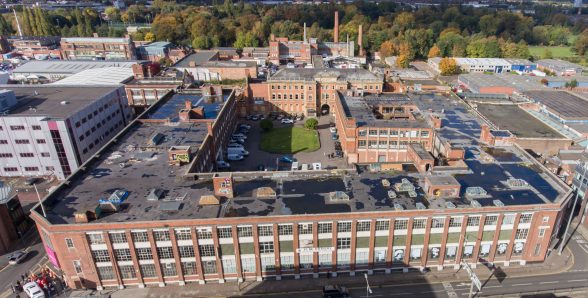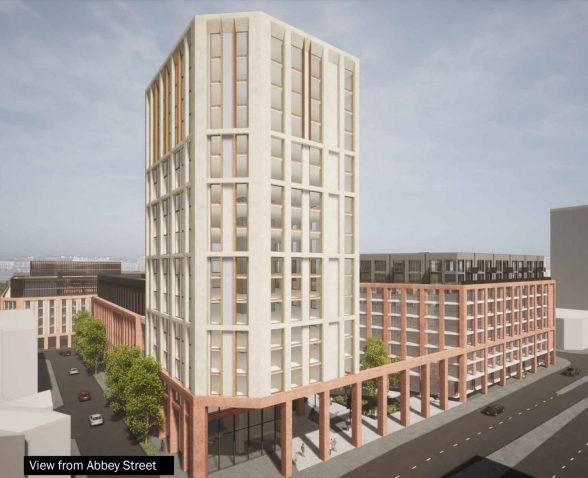This website uses cookies
This website uses cookies to enable it to function properly and to analyse how the website is used. Please click 'Close' to accept and continue using the website.



Image: Matt Allen (Flickr)
C20 Society has joined Historic England and Leicester Civic Society in condemning plans to demolish the former Corah Factory, at the St Margaret’s Works site in the East Midlands city.
St Margaret’s Works, on St John Street and Burleys Way, is home to a fine collection of surviving industrial buildings, dating from 1865 to the early and mid-20th century. Once a hosiery factory operated by Nathaniel Corah & Sons (Established 1830), it epitomised the industrial landscape of Leicester, and was reportedly the largest factory of its kind in the country during the first half of the 20th century. One of the first clothing partners of Marks & Spencer, Corah was also widely-accepted to have been instrumental to the retailers success in the garment market. After struggling throughout the 1970’s and 80’s, the business was sold in the early 1990’s and the factory site closed a few years later, remaining unoccupied ever since.
Proposals by developers Cityregen Leicester and Galliford Try Investments would see the majority of the factory buildings on the site demolished to make way for 1,143 houses, with only tokenistic heritage features retained – a pair of chimneys and portions of the façade.

Image: Visit Leicester
C20 strongly opposes the loss of these Non-Designated Heritage Assets (NDHA’s), especially the Shipping and Printing Department of 1919 and the ‘Horseshoe’ Building of 1937 to 47, which are of particular architectural merit. The group of buildings are a lasting record of Leicester’s historic hosiery industry and are valuable part of the city’s heritage.
There appears to be no reason why they could not be successfully adapted and repurposed, with countless examples across the country of former industrial buildings finding a viable new purpose. Indeed, the applicant’s own structural engineers have concluded that the Shipping and Printing Department, requires a replacement roof but is otherwise structurally sound, and the ‘Horseshoe’ Building was also deemed to be “Structurally […] in good condition” (D&AS).
The overall site represents a huge opportunity for heritage-led regeneration and placemaking in line with the government’s current agenda, and of the kind encouraged in the council’s Core Strategy on the Historic Environment (CS Policy 18).

Image: Maber Architects
A spokesperson for Cityregen Leicester Limited and Galliford Try Investments said:
“While reinvigorating the Corah Site, our proposals also recognise its important history. However, to regenerate the site and deliver a viable scheme which retains more than our plans propose is not a realistic possibility.”
C20 Society has seen no evidence to support these claims regarding the viability of retention, while demolition of these buildings would cause serious harm the historic character and distinctiveness of the city. We urge the developers to fundamentally rethink their approach, with a more sensitive, imaginative and environmentally-responsible scheme.
A famous local slogan once stated: “Leicester clothes the world”, reflecting the civic pride and confidence of the city’s manufacturing industry. While Leicester must look to the future, it can still do so while respecting and taking pride in its past.

Image: Matt Allen (Flickr)

Image: Takia Lenskapov (Twitter)

Become a C20 member today and help save our modern design heritage.